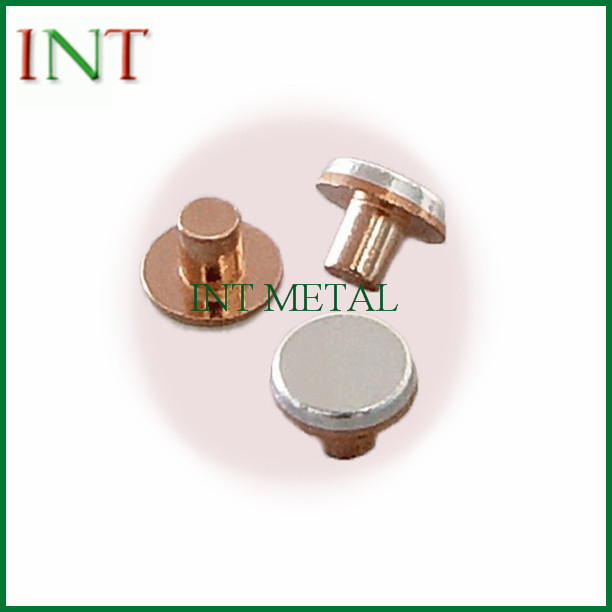Considerations regarding AgNi bimetal contact rivets
2023-11-16
Silver-nickel (AgNi) bimetal contact rivets are components used in electrical switches, relays, and other devices where reliable electrical contacts are essential. These rivets consist of two layers: a silver layer and a nickel layer. The combination of these two metals provides a balance of electrical conductivity, wear resistance, and other properties. Here are some key features and considerations regarding AgNi bimetal contact rivets:
1. Composition:
- Silver (Ag): Silver is chosen for its excellent electrical conductivity, allowing for efficient current flow through the contacts.
- Nickel (Ni): Nickel is known for its hardness and wear resistance. It is added to enhance the durability of the contacts and reduce wear during electrical switching.
2. Electrical Conductivity:
- The silver layer ensures that the contacts maintain high electrical conductivity, supporting efficient current transfer.
3. Wear Resistance:
- The nickel layer contributes to the wear resistance of the contacts, making them suitable for applications where there is frequent contact movement, such as in switches that open and close frequently.
4. Low Contact Resistance:
- The combination of silver and nickel aims to minimize contact resistance, ensuring a stable and reliable electrical connection.
5. Applications:
- AgNi bimetal contact rivets are commonly used in electrical switches, relays, and other devices where efficient electrical switching is crucial. They find applications in various industries, including automotive, telecommunications, and industrial equipment.
6. Arc Erosion Resistance:
- The combination of silver and nickel provides resistance to arc erosion, which is important for maintaining the integrity of the contacts over multiple switching cycles.
7. Manufacturing Processes:
- AgNi bimetal contact rivets are typically manufactured using processes like powder metallurgy, where powders of silver and nickel are compacted and sintered to form a solid material with the desired properties.
8. Customization:
- The composition and manufacturing processes can be adjusted to meet specific requirements, allowing for customization based on the needs of the application.
9. Surface Treatments:
- Depending on the application, the surface of AgNi bimetal contact rivets may undergo treatments such as plating or coating to enhance their performance, improve corrosion resistance, or provide additional protective layers.
10. Cost Considerations:
- While the cost of AgNi bimetal contact rivets may be higher than some alternatives, their performance and reliability in specific applications can justify the investment.
These bimetal contact rivets are chosen for applications where a combination of electrical conductivity, wear resistance, and other properties is required for reliable and efficient electrical switching. The specific composition and manufacturing processes may vary, allowing for adaptation to different application requirements.



